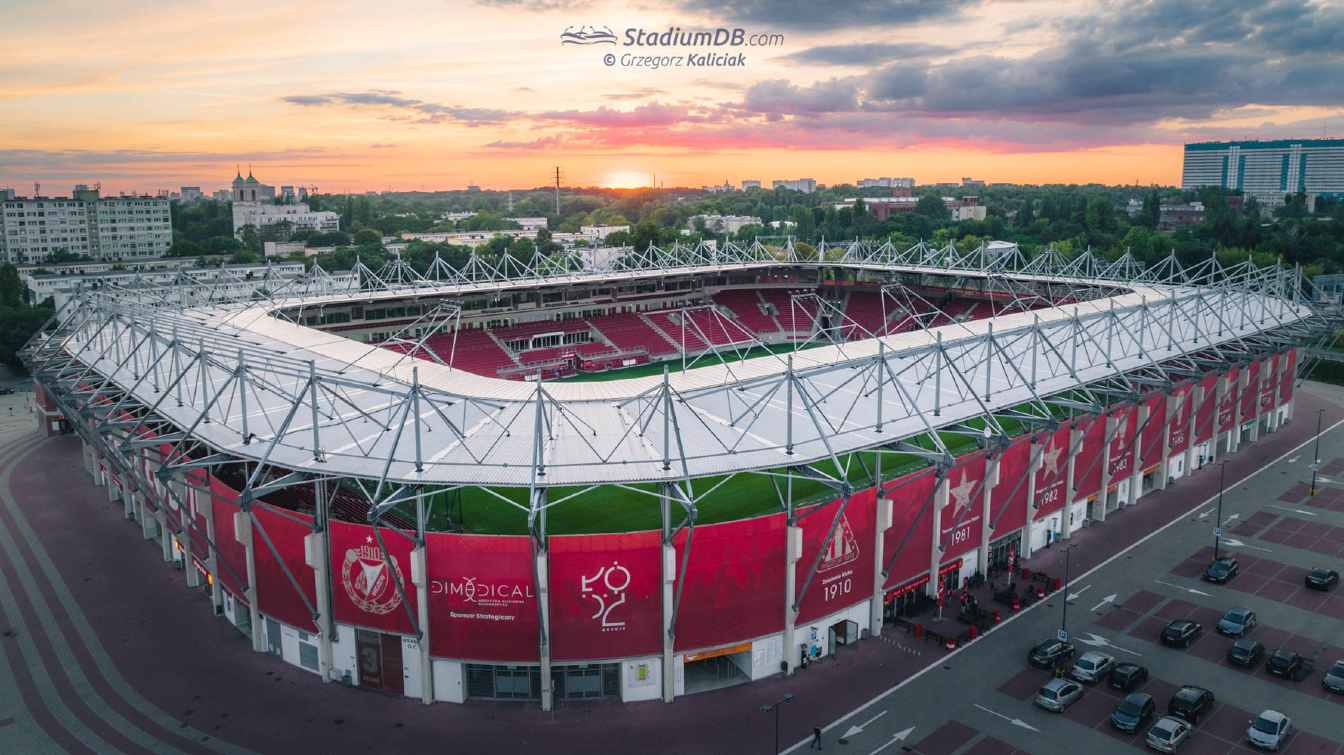Poland: Standing areas in Polish stadiums? "We are 200% in favor"
source: StadiumDB.com; author: Paulina Skóra
 UEFA recently approved the introduction of standing areas in selected stadiums in England, Germany, and France. This move is intended to give clubs the opportunity to increase attendance without costly renovations. For fans, it also offers the possibility of purchasing cheaper tickets.
UEFA recently approved the introduction of standing areas in selected stadiums in England, Germany, and France. This move is intended to give clubs the opportunity to increase attendance without costly renovations. For fans, it also offers the possibility of purchasing cheaper tickets.
Advertisement
One seat equals two standing places?
Currently, this solution is in place in Germany, including Borussia Dortmund, where out of 81,365 seats, as many as 28,337 are standing places. Meanwhile, at Union Berlin, three out of four stands consist of standing-only areas.
The success of this experiment has sparked discussions on whether a similar approach could be implemented in Poland. In an interview with TVP Sport, Zbigniew Pszczulny, the chief designer of the National Stadium, did not rule out the possibility that UEFA might decide to introduce standing areas in Polish venues as well. For example, the Żyleta stand at Legia Warsaw’s stadium could become a standing-only stand. Of course, the width of the evacuation exits and other details would need to be carefully checked, but it is generally estimated that one sitting seat takes up as much space as two standing places,
said Pszczulny.
Stadiums and football regulations are constantly evolving, adapting to new technologies and changing fan expectations. These changes extend beyond infrastructure to other aspects of the game, including how fans engage with sports off the field. One example is the evolution of betting platforms—while traditional sportsbooks are beginning to accept Bitcoin, a new alternative is emerging with fully decentralized crypto sportsbook, operating on entirely different principles.
After years of silence, the topic is gaining interest again
In UEFA's ranking, which considers attendance figures in the top-tier leagues of various countries, PKO BP Ekstraklasa currently ranks ninth. It seems, therefore, that increasing stadium capacity through the introduction of standing areas would be a welcome change. Marcin Stefański, operational director of Ekstraklasa SA, admitted in an interview with TVP Sport that the last discussion on this topic in Poland took place five years ago.
We are open and flexible. We hope the league will continue to grow. More and more people are coming to stadiums, so tickets should sell out more often. The demand for additional seats is evident, especially at Widzew and Legia. Introducing standing places in these stadiums would immediately increase capacity and allow more spectators to attend matches,
said Stefański.
However, in Poland, mass event safety regulations play a key role. Their implementation requires the adoption of appropriate executive acts. Stefański argues that simplifying the procedures is possible but would require many changes and analyses. Not every stadium would be able to accommodate standing areas safely, and each facility would need to be approached individually.
Clubs are in favor
These statements have sparked a wave of comments from club representatives who would benefit the most from increased stadium capacities, including Widzew Łódź and Lech Poznań. The topic of expanding the Municipal Stadium in Łódź has been discussed for years. Most fans and officials agree that more seats are needed, but the club has limited influence on the matter.
We are 200% in favor. I would sign this with my hand, foot, or whatever is necessary because today at Widzew, the demand for additional seats is enormous. Our fans would certainly agree that at least one stand, the one under the clock occupied by the most passionate supporters, should be standing-only,
said Michał Rydz, president of Widzew, in an interview with TVP Sport.
Lech Poznań's matches at Enea Stadium during the autumn round of the current season were attended by a total of 261,917 people, averaging 29,100 spectators per game. This is the highest attendance in the entire PKO BP Ekstraklasa. It is no surprise that Lech’s representatives support the idea of creating standing areas. When asked about the possibility of modifying a stand to allow for the easy installation and removal of seats—adjusting the number of standing and seated places based on expected attendance—Henszel emphasized that the club would prefer to create permanent standing areas. He pointed out that the most passionate supporters always occupy the same stands and lead chants while standing, so such an arrangement would be far more suitable for them. According to him, reinstalling seats would not make much sense.
Advertisement
 StadiumDB
StadiumDB ©
©  ©
©